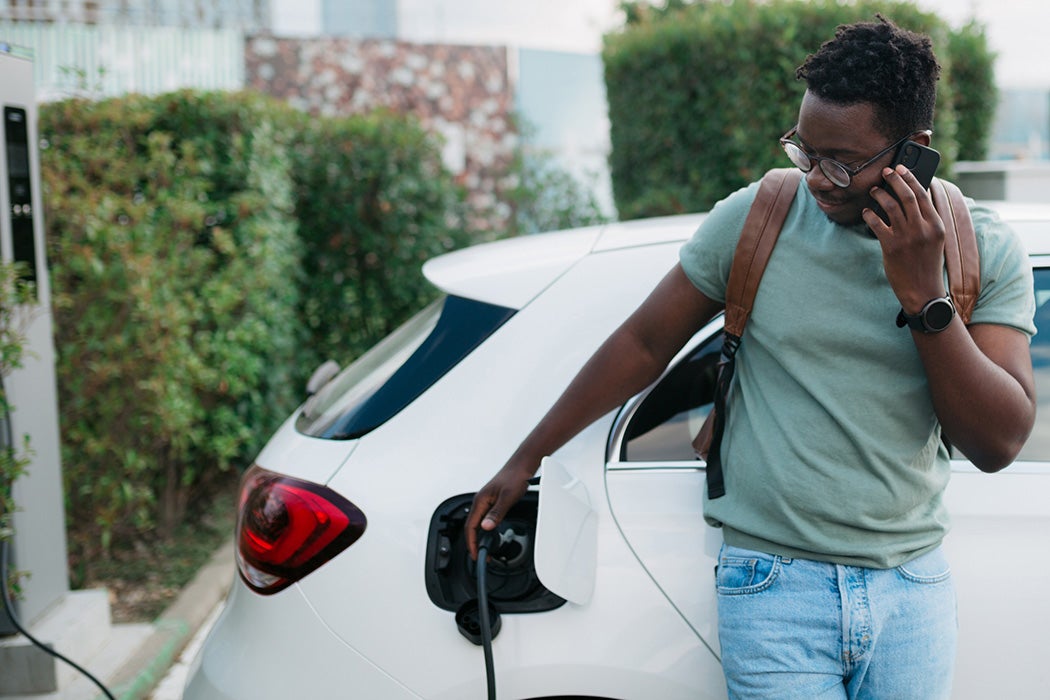Transportation remains the largest source of greenhouse gas emissions in the United States, with passenger vehicles and trucks the most significant contributors. The growth of the electric vehicle (EV) market and the deployment of associated charging infrastructure has been encouraged by the Biden administration, with the hope that 50 percent of all new vehicle sales will be electric by 2030. Yet, without making electrified transportation more accessible in its entirety, we may simply be trading fossil fuel conflicts for “green” conflicts. To avoid the electrification of transportation becoming a mere “technofix,” we may need to first remedy past and current injustices in the deployment of electric transport.
Existing issues of injustice have hindered the widespread adoption of electrified transportation into all communities. A legacy of disinvestment due to redlining (the explicit prevention of homeownership and governmental disinvestment based on race) and purposeful placement of undesirable land uses (in this case, federal highways) in communities of color has led to the maldevelopment of these neighborhoods. In many cases across the US, historically redlined communities have inefficient public transportation, disproportionately fewer bike lanes, and little to no shaded sidewalks (as trees can help keep sidewalks cool during hot summers), which together necessitate the ownership of a personal vehicle.
To reduce carbon emissions on a community level, it makes sense to redirect investment to boost public transit usage while encouraging the electrification of buses, trucks, high-speed local rail, and distance rail. Expanding bike lanes and sidewalks, and creating no-car “superblocks” disincentivizes personal vehicle usage in city centers and encourages carbon-free transport, all while increasing the neighborhood property value. It’s not simply about replacing fossilized internal combustion engines for electric ones, but about reorienting how we move about the communities we hold dear—all while reducing the need for personal transportation, alleviating pressure on the environment.
Still, greening transportation can have unintended consequences. As evidenced by the personal EV transition right now, historically redlined communities are facing a wave of “green gentrification,” where the installation of EV charging infrastructure, bike lanes, and sidewalks, are raising property values to such an extent where they’re unaffordable for current community members. Without affordable housing protections for vulnerable owners and renters, especially in historically redlined communities, the EV transition could stimulate the displacement of long-time residents from their homes.
Weekly Newsletter
This is especially unfortunate in terms of personal EVs, as it makes sense for vulnerable communities to transition first to electrified forms of transportation. Personal EVs “hold lower operating and maintenance costs,” writes energy systems scientist Dave Cook, thereby reducing the burden of private vehicle ownership on those who need it most. President Biden put forth a federal tax credit (one can claim up to $7,500 on a new EV, with up to $1000 available for individuals and businesses for EV charging infrastructure) that’s intended to make new EV ownership more accessible.
As Cooke points out, given all of the equity issues that surround tax credits and reimbursement systems (especially for individuals without credit access), this credit does little to make the EV market more penetrable by people who need it most. By creating equitable financing structures that are stratified by income-level and by opening the tax incentive to used EVs, automobile-market dynamics can change to address past and current power asymmetries. We may need to go above and beyond personal EV accessibility—to expanding all forms of carbon-free transit—while making sure we don’t repeat past injustices.
Support JSTOR Daily! Join our new membership program on Patreon today.







